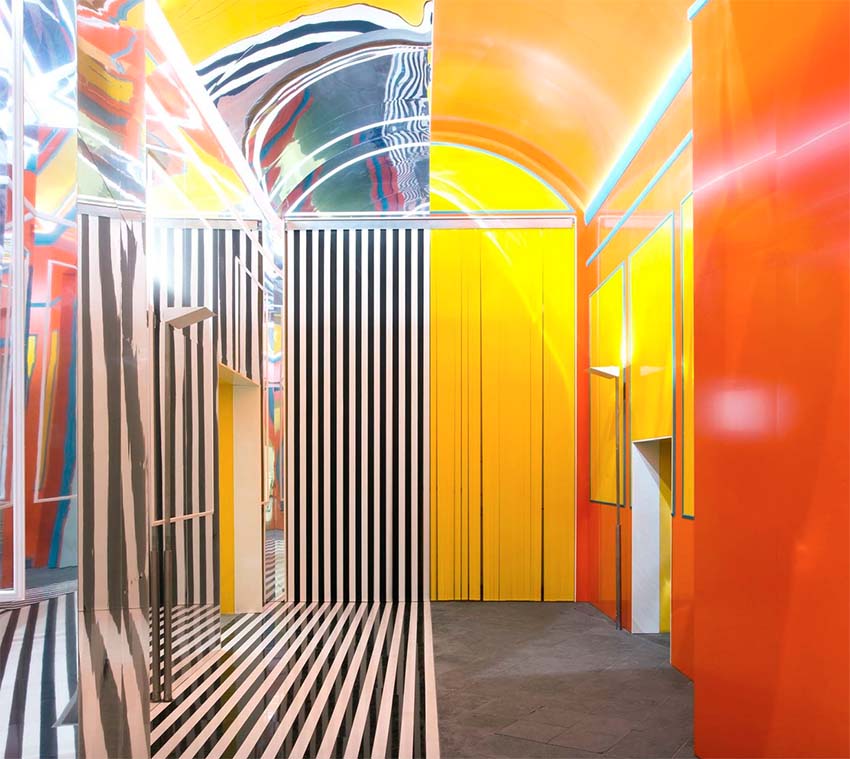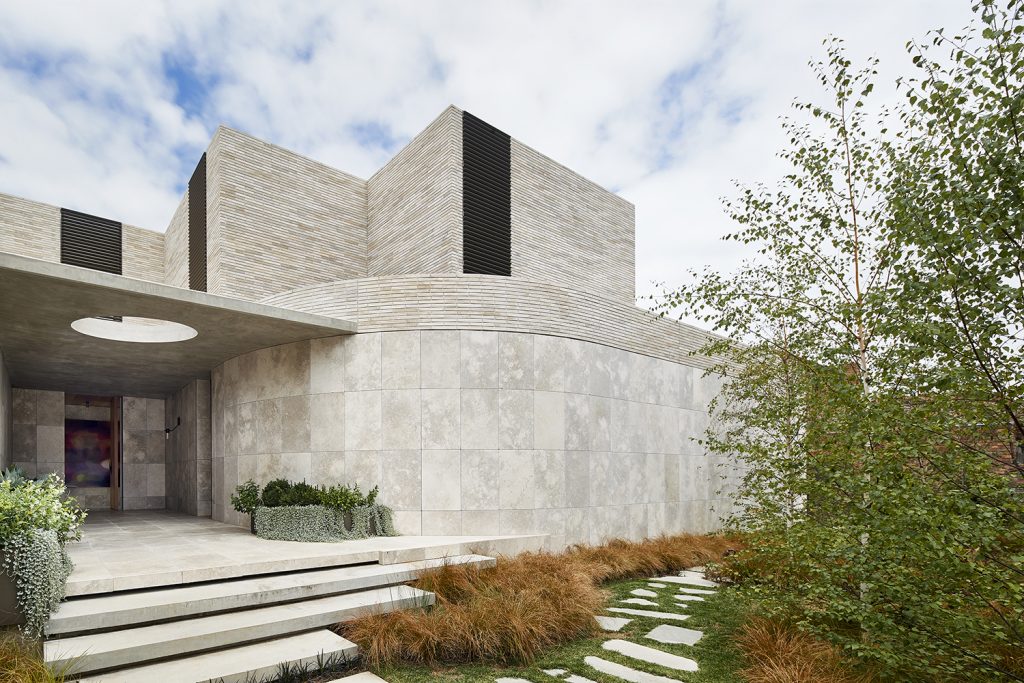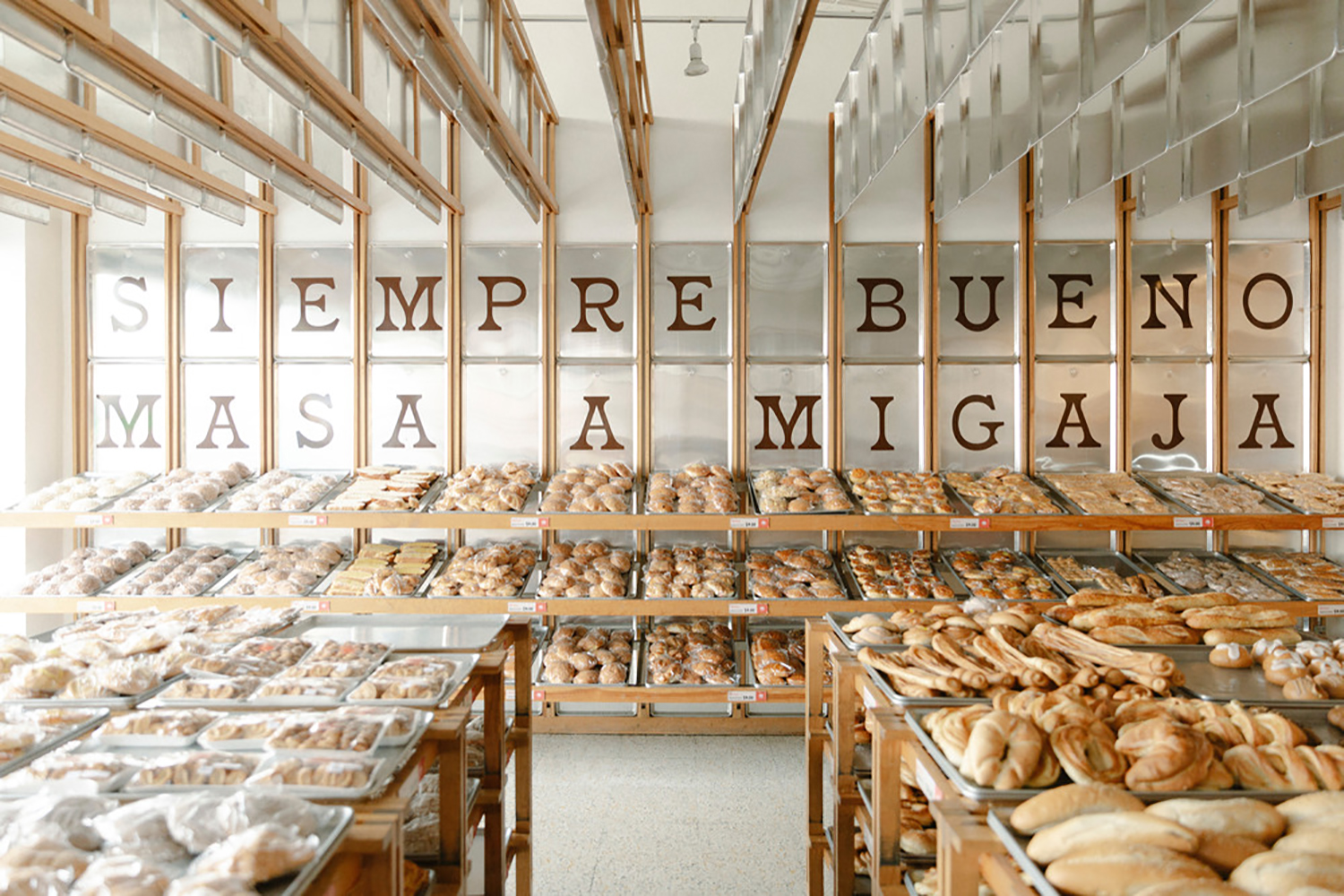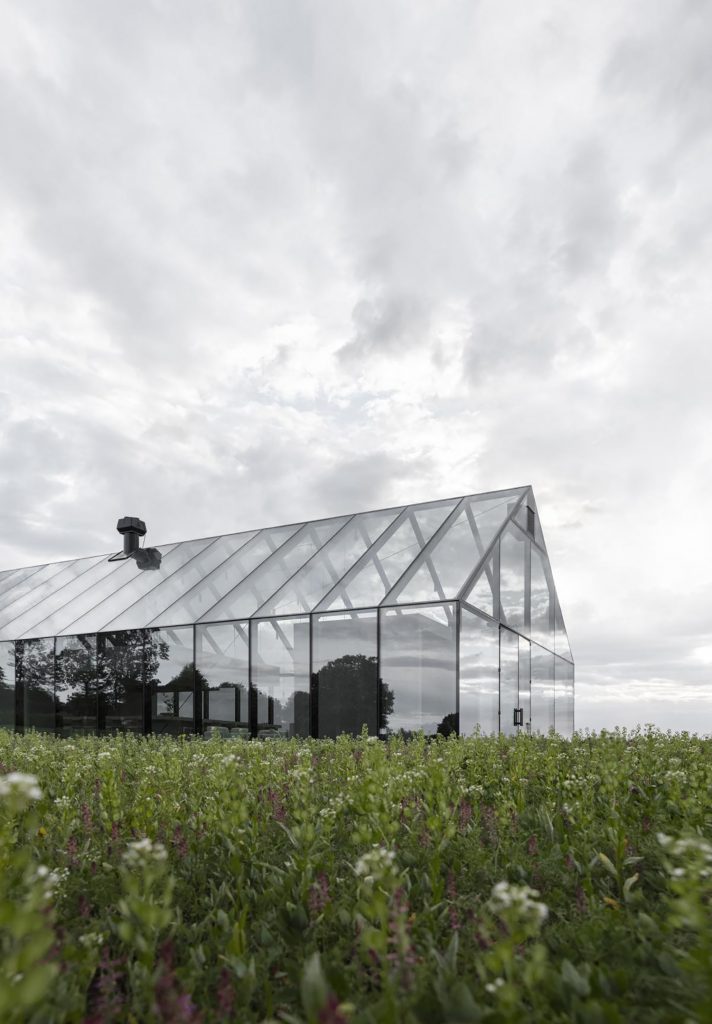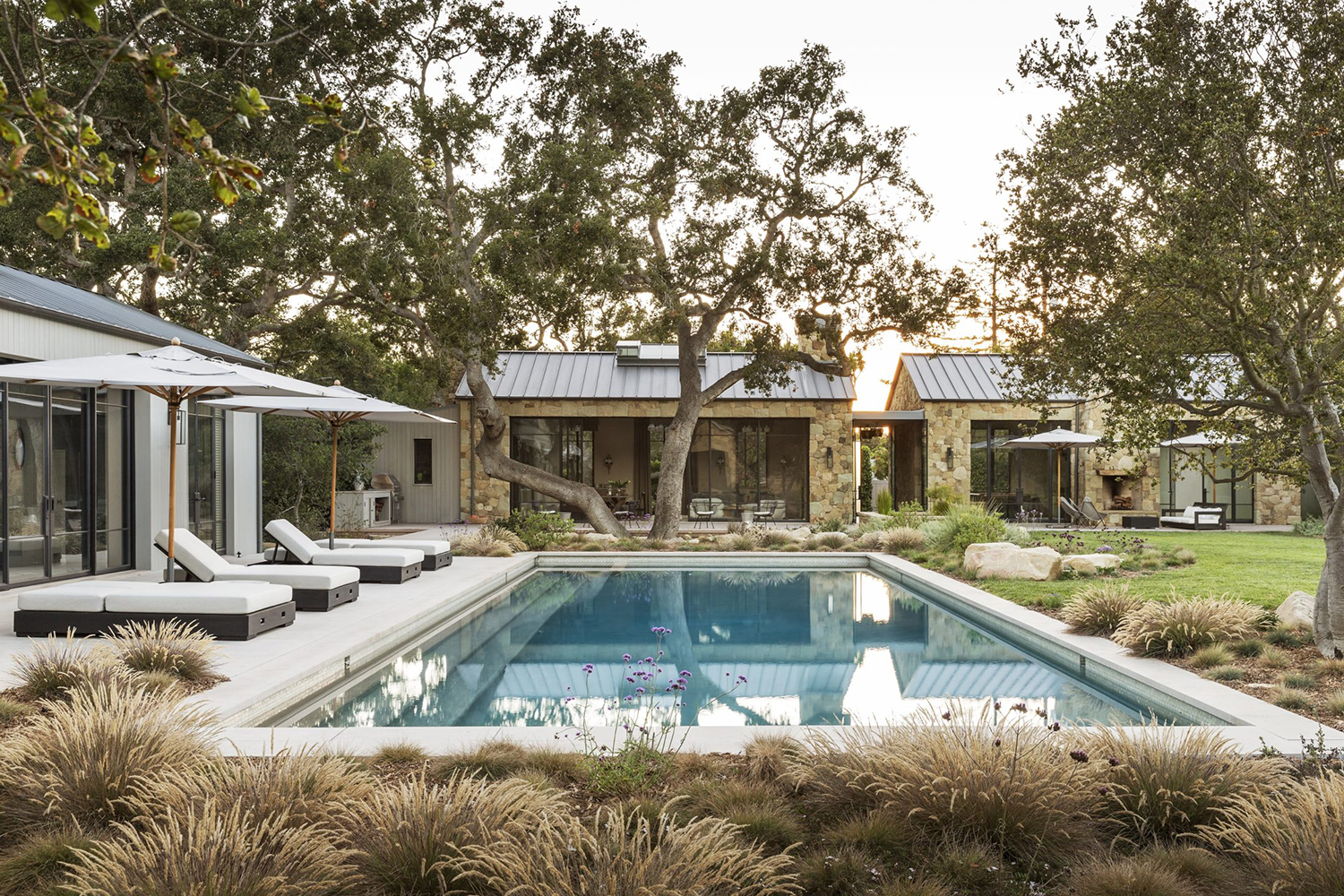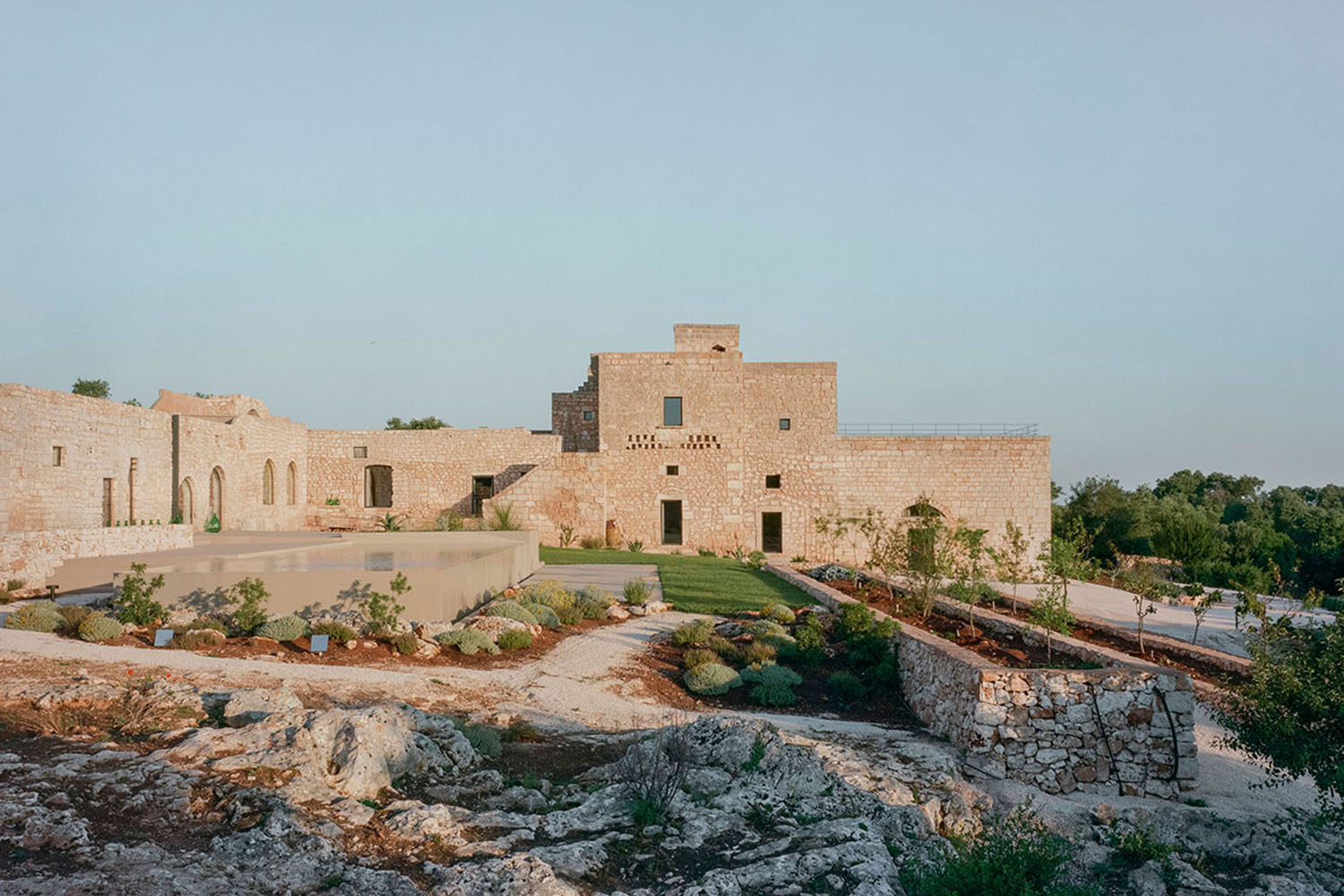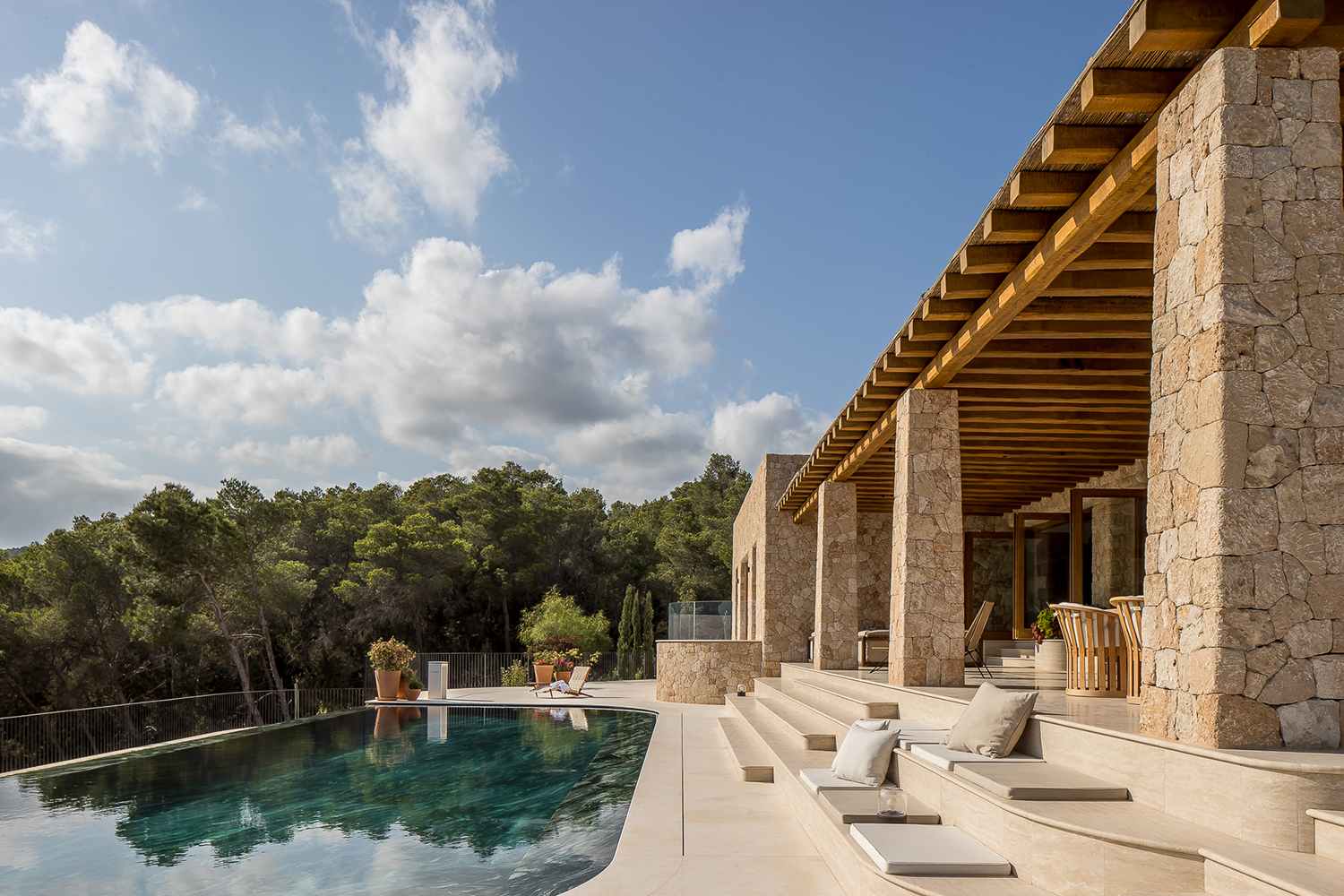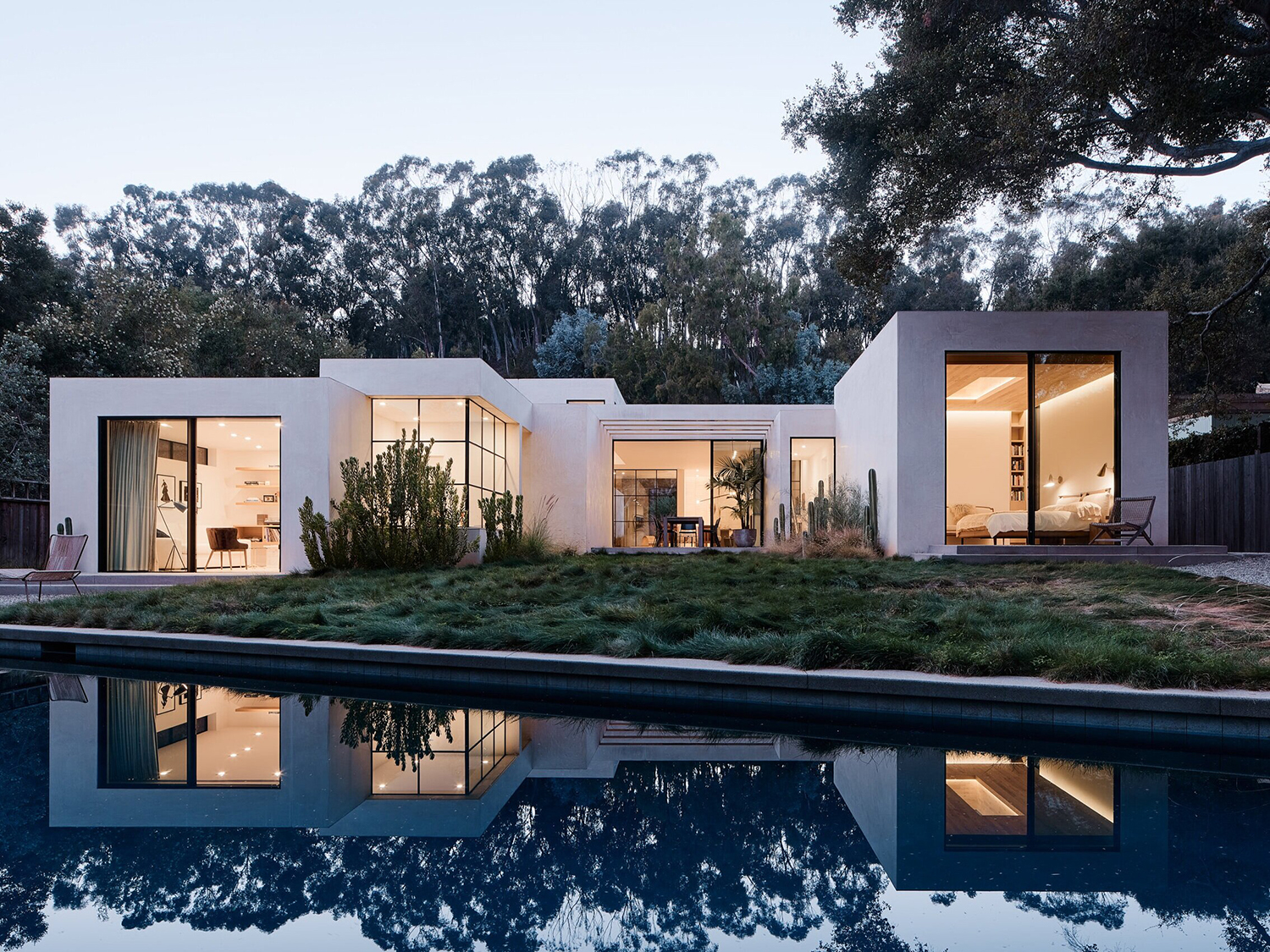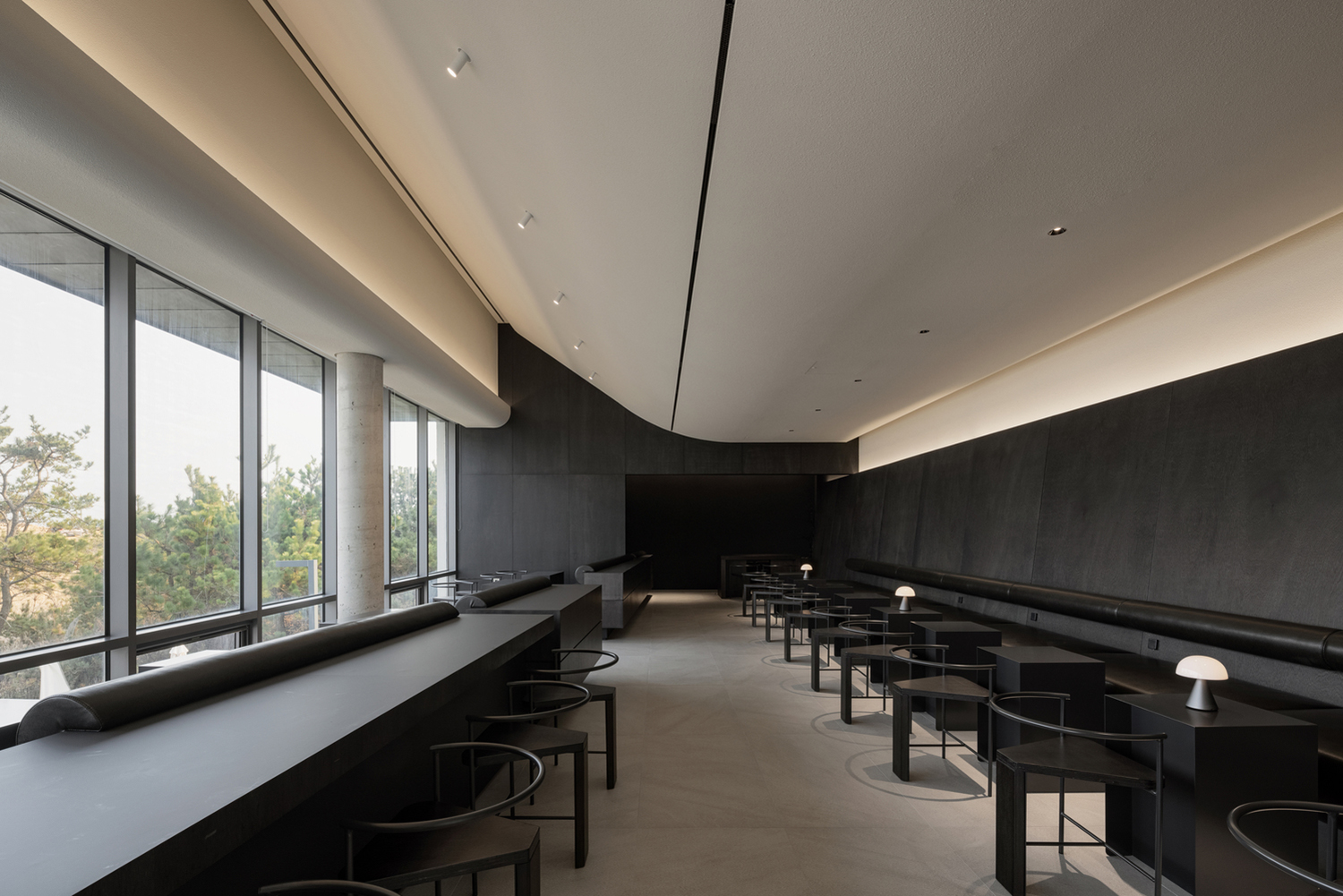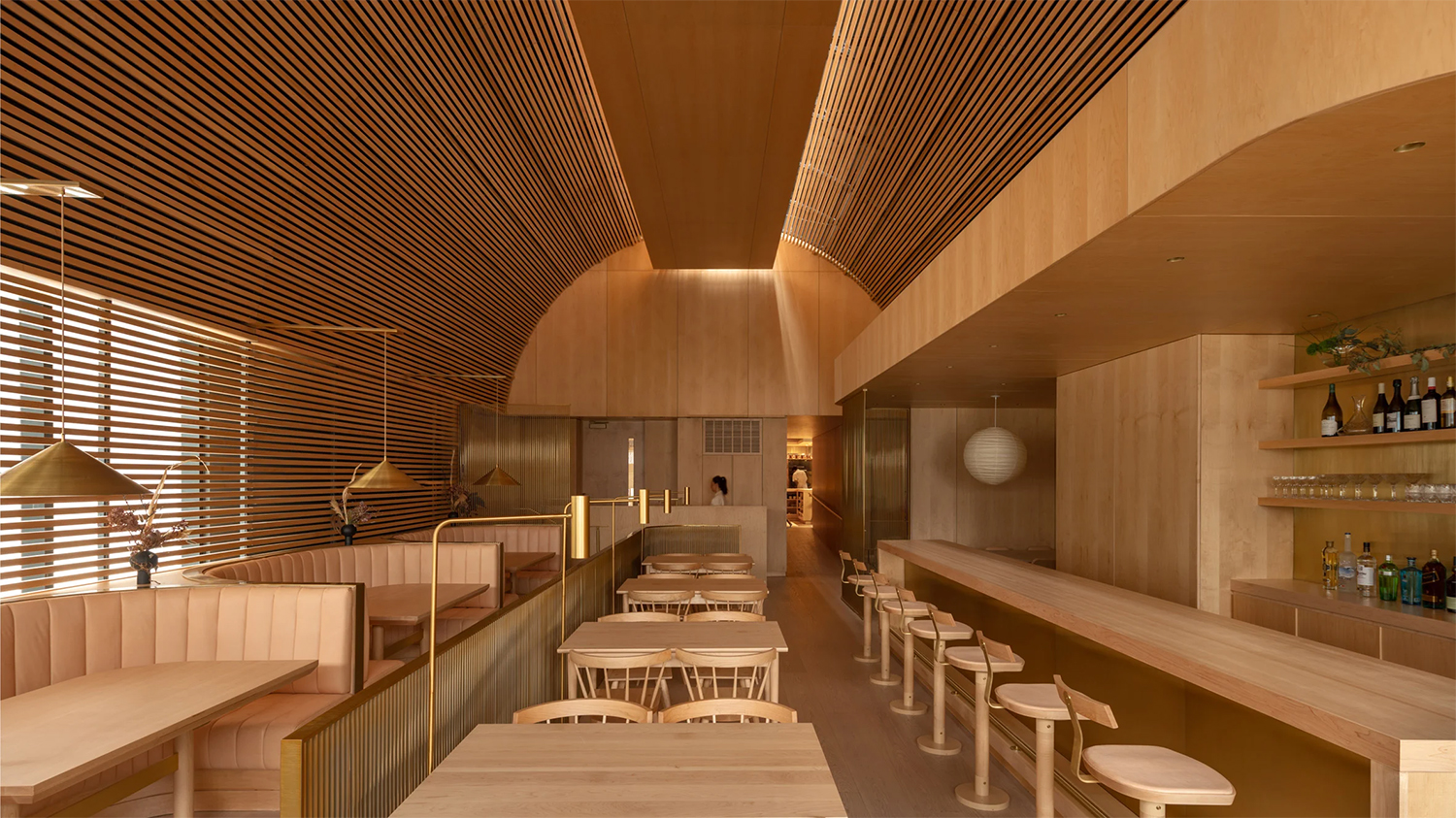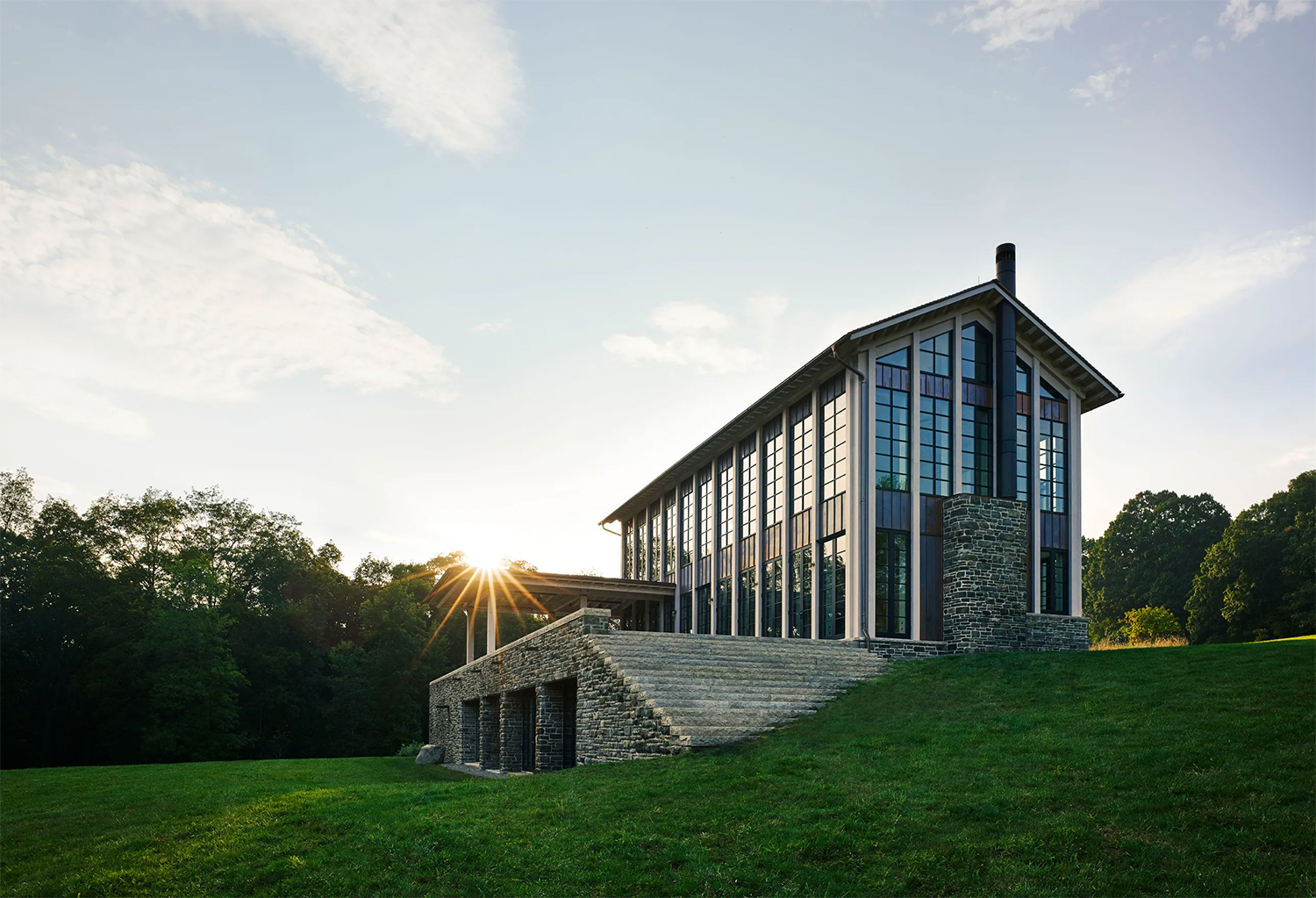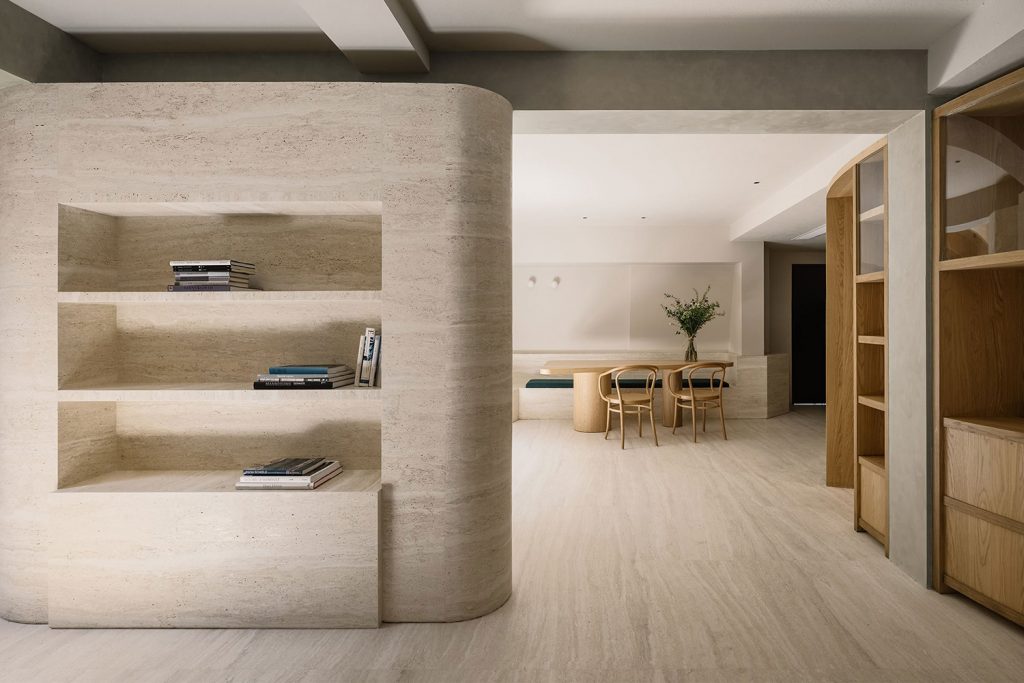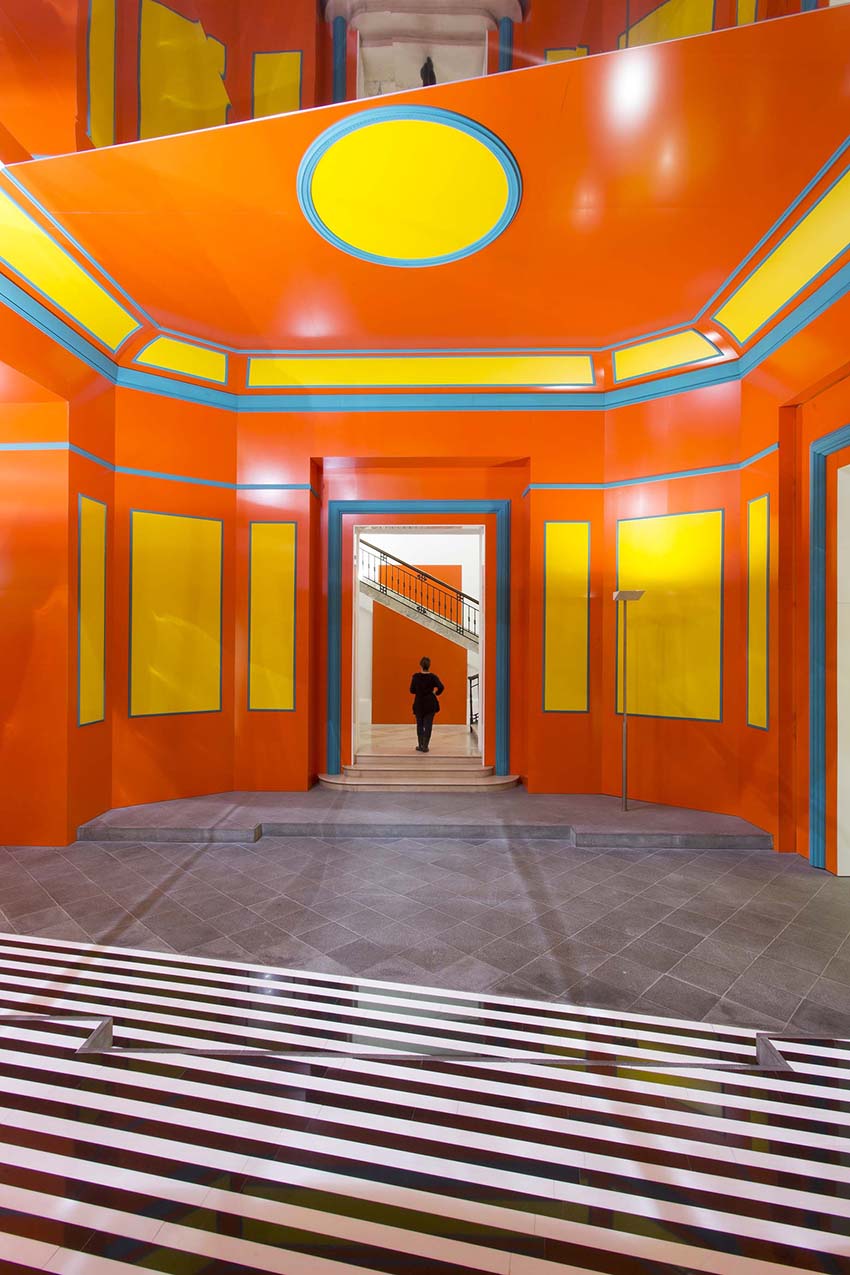
French minimalist conceptual artist, Daniel Buren has since the 1960s been known for his stripes and bold colours. Temporary, bold, wide stripes created by Buren have graced the walls of – and transformed the spaces themselves – at the Art Institute of Chicago and the Picasso Museum, in Paris, for example. Permanently, Buren’s stripes adorn a bridge in Bilbao and the Palais-Royal in Paris, stunning his critics who have implied that his work is not art at all.
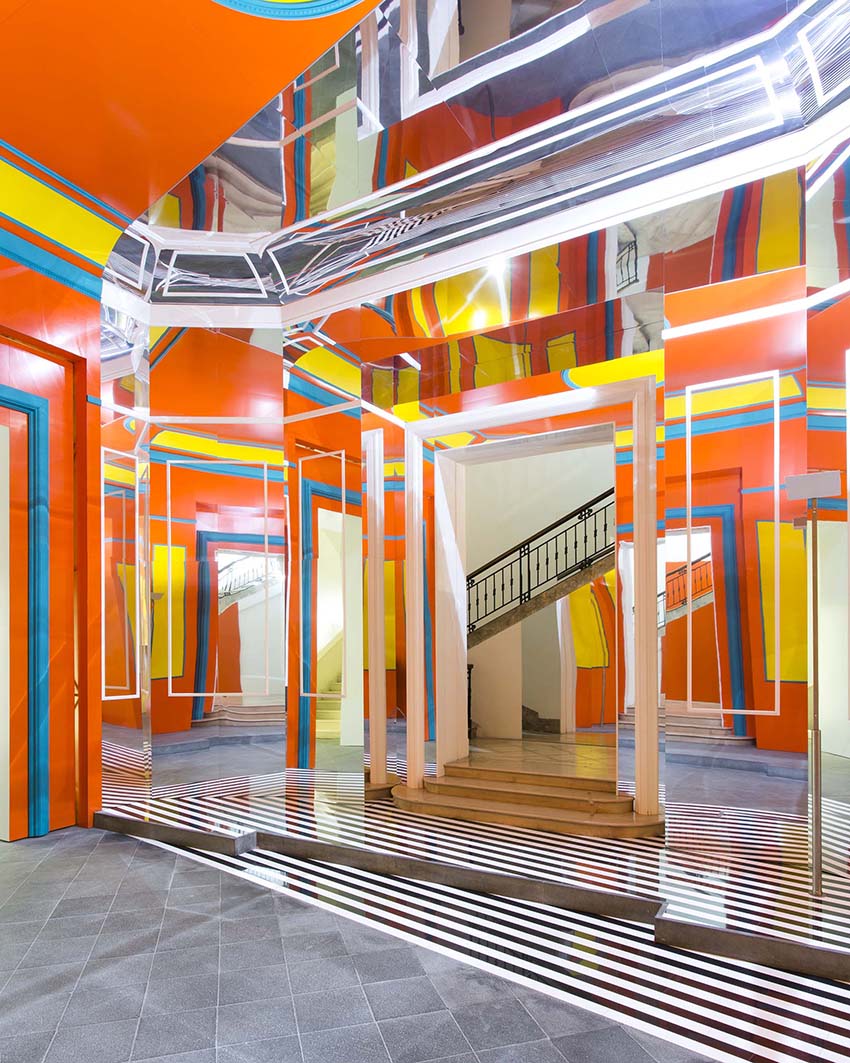
In Naples, at the Museo d’Arte Contemporanea Donnaregina (The Madre museum), an installation and solo exhibition by Buren opened a month ago (and will stay open till early July 2017). Axer / Désaxer. Lavoro in situ, 2015, Madre, Napoli – #2, curated by Andrea Viliani and Eugenio Viola, was commissioned to celebrate the museum’s first decade of activity and to highlight the relationship between the museum and the community.
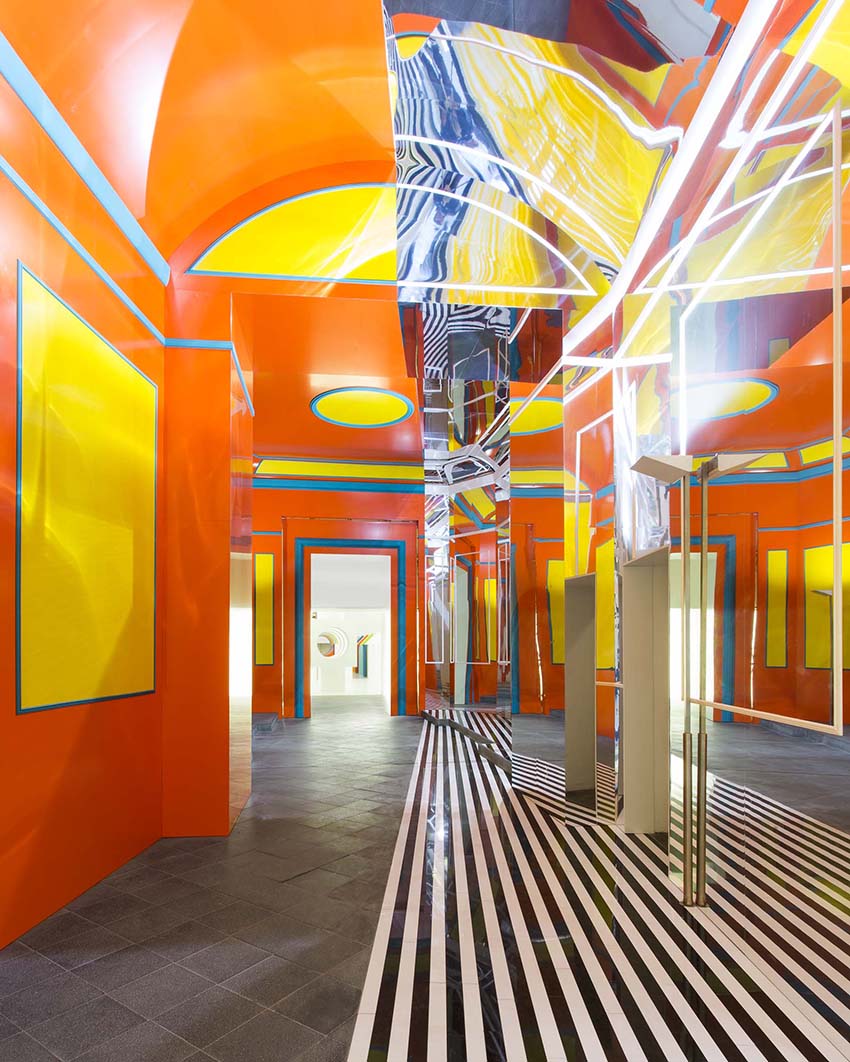
This installation is the second of two commissioned by the Madre on this occasion. The first, Come un gioco da bambini. Lavoro in situ, 2014-2015, Madre, Napoli – #1, will close at the end of February 2016.
Axer / Désaxer was created specifically for the atrium of the museum building, the 19th-century palazzo Donnaregina located in the historical centre of Naples.
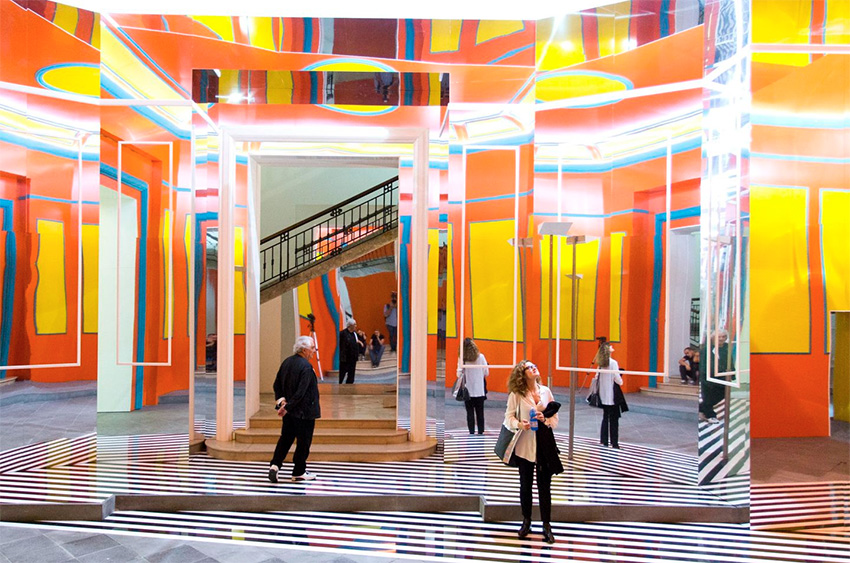
Walls painted in bold, warm colours of orange and yellow dominate the installation that includes mirrors and Buren’s famous 8.7-cm-thick black-and-white stripes that cover part of the floor, suggesting an unusual escape route and the street outside.
The description of the installation says that the artist has created ‘… an area of perceptual and cognitive mobility, of vision, mediation, mutual attraction and communion, in which interior and exterior, museum and community penetrate into each other and merge. Each visitor is thus welcomed and invited, literally at a glance, to be a part of the work, to actively participate in the relation it celebrates between the institutional sphere and public dynamics.’
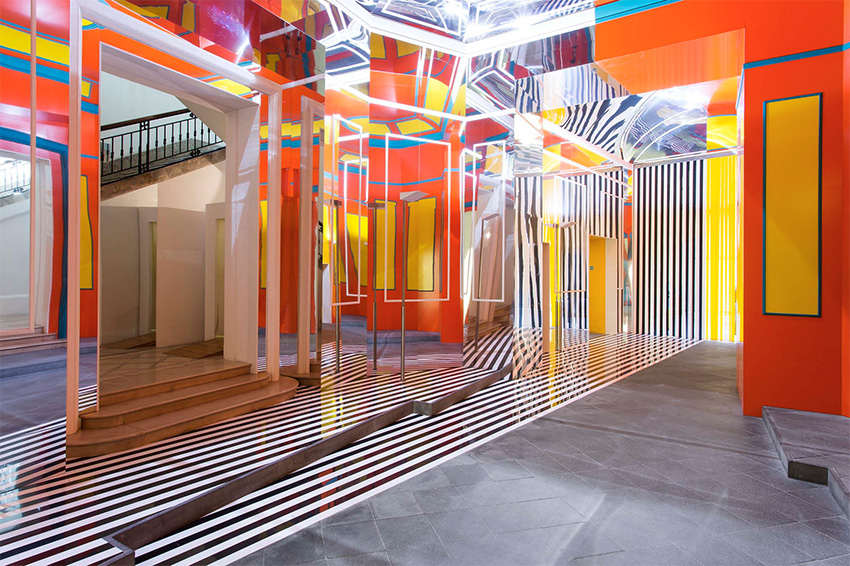
In our view (and in plain language), the Axer / Désaxer installation acts as an art installation in itself while creating a happy, welcoming and whimsical entry point into the museum. – Tuija Seipell.
